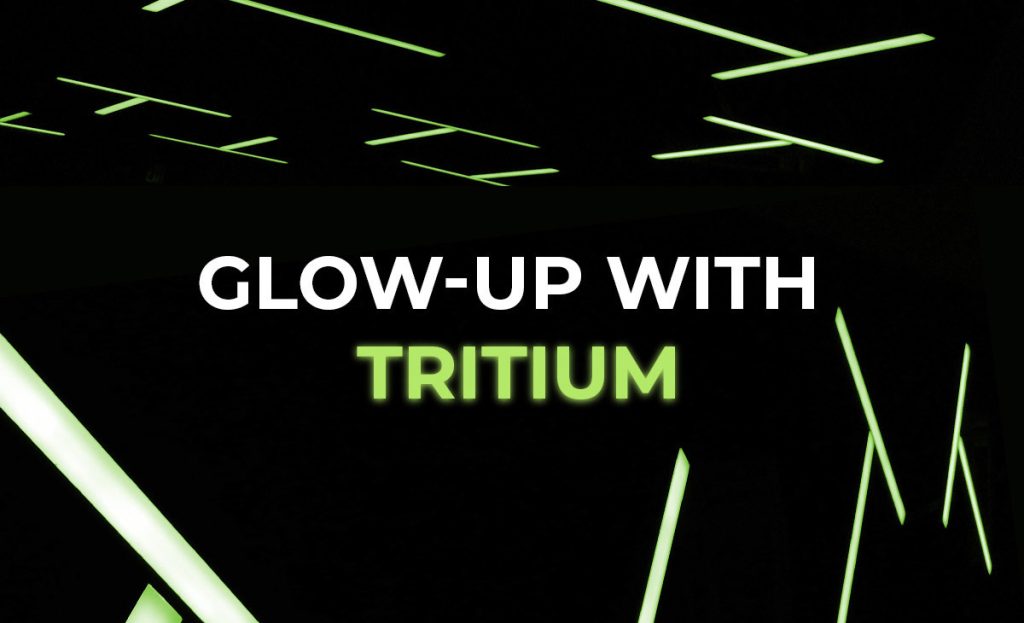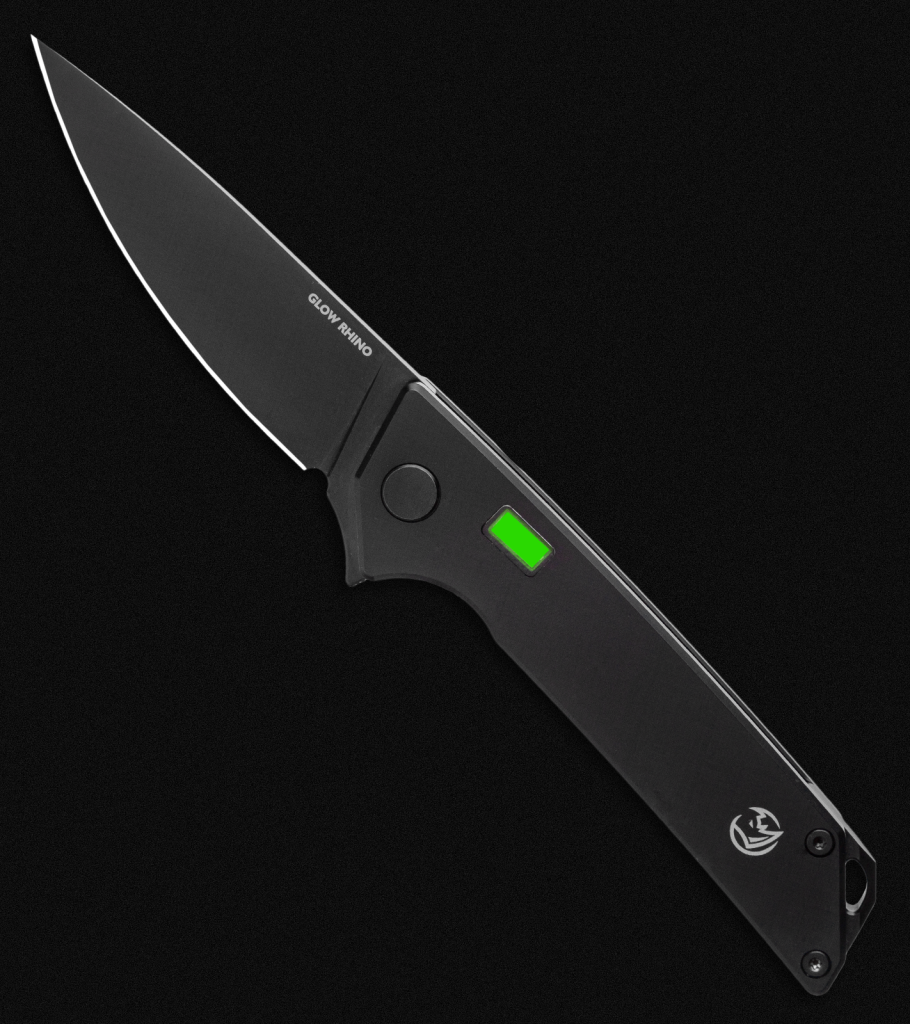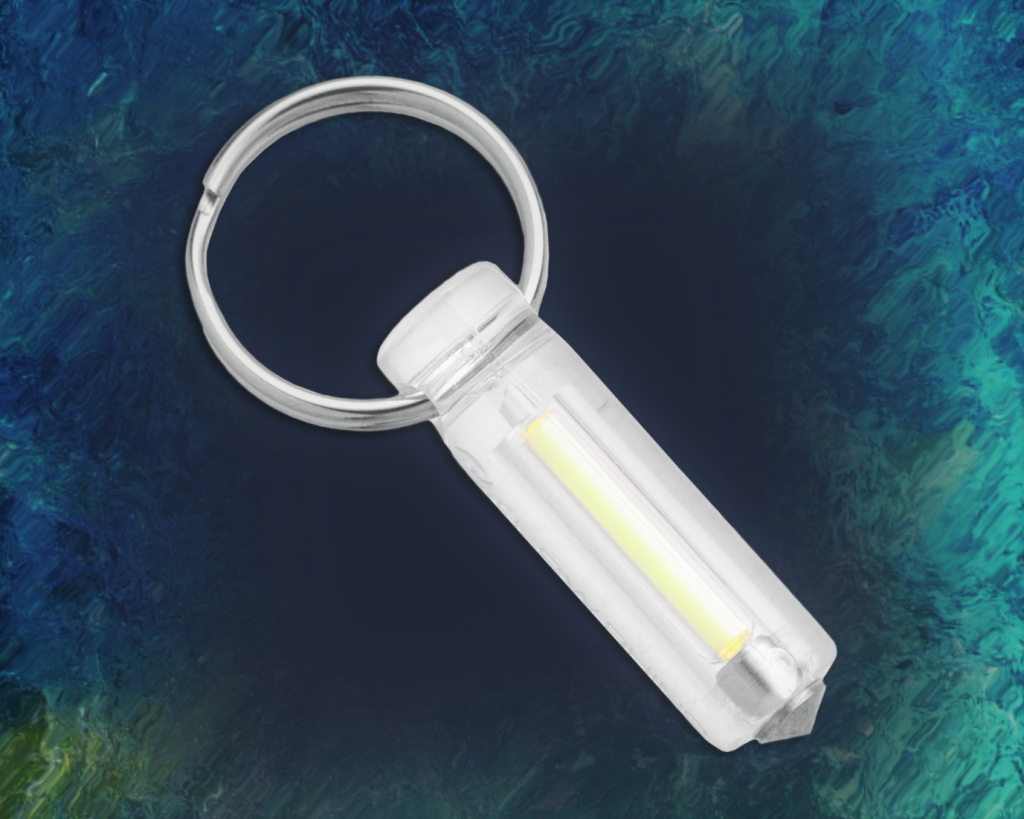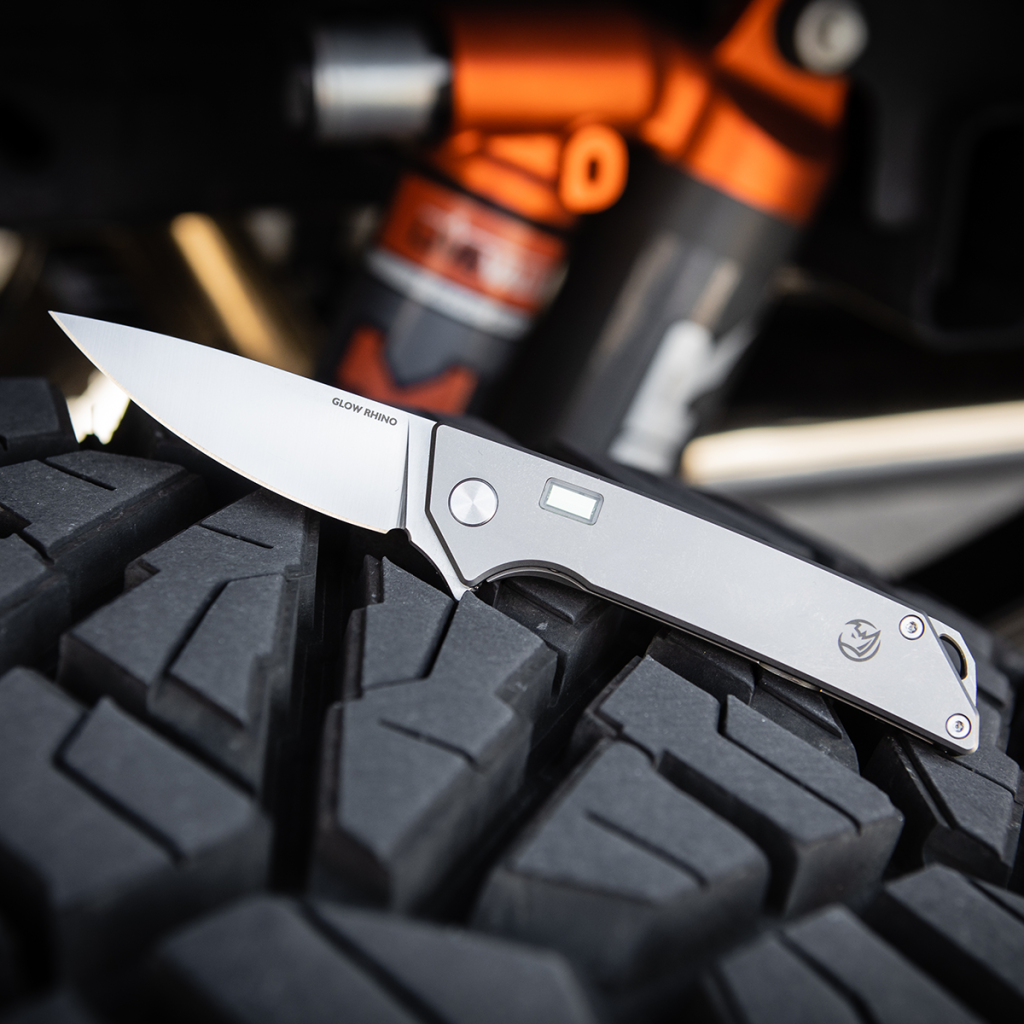What is tritium?

Tritium is an unstable isotope of hydrogen that gives a radioactive glow as it emits beta particles. Owning a pocket knife like the Glow Rhino LightBringer—which features two tritium lamps—means you own a knife built with the same radioactive material that boosts nuclear bombs, appears as a byproduct in nuclear reactors, forms in the atmosphere when cosmic rays bombard nitrogen molecules in the air, and may just be the key to sustainable energy through nuclear fusion (not to be confused with fission). While it’s one of the lightest particles period, it carries a heavy legacy. And with a description like that, you might think the last thing you want to do is put it in your pocket. Because, who wants a radioactive pocket knife, right?
Well, the answer is you do, probably. Hear me out.
Is tritium harmful to humans?

Is tritium radioactive? Yes. Is it used in nuclear bombs? Yes. So, is tritium dangerous? No—unless you plan to use it like lotion or as the special sauce at your next barbeque (that is, don’t ingest it, and don’t let your skin absorb it). It can’t cause cancer because the beta particles it emits (its radiation) are so low energy that they can’t even break your skin. If you were hoping to get mutant powers from tritium, you’re out of luck. With the danger factor out of the way, suddenly tritium isn’t some doomsday material.
It’s just awesome.

Think about it. When you carry the Glow Rhino LightBringer, you carry a knife that contains one of the rarest natural elements found on Earth, and this element lends its power to two radioactive points that continuously glows day and night. For perspective, nuclear fusion (atoms combing into bigger ones) has four times the energy output of nuclear fission (atoms separating into smaller ones) and nearly four million times the energy output of contemporary fuel sources like coal and oil. And you could have that in your knife or on your keychain!
What is tritium used for? – The History of Tritium

Coolness aside, tritium has many practical purposes. It was originally discovered in 1934 by Ernest Rutherford, Mark Oliphant, and Paul Harteck, and isolated by Luis Alvarez and Robert Cornog five years later. Around the 1960s, it became popular to use tritium on watches, and it has since found its way into key fobs, gun sights, and pocket knives. Tritium is used to highlight key features of items, making them easy to use in the dark. On watches, tritium is used to illuminate the hands and markers. On pocket knives, it’s found in the handle, thumb stud, or locking mechanism, letting you safely grab the knife, open it, and close it in the dark.
How does tritium glow and when does it stop glowing?
Tritium’s glow is radioluminescence, meaning it’s always on: There’s no such thing as tritium charging, no need for batteries, and no light exposure required. However, the light can’t just last forever: Because tritium is radioactive, it has a half-life. A radioactive material’s half-life is the time it takes for half the material to decompose. As tritium radiates away its beta particles, what’s left is helium-3, which doesn’t glow. Tritium’s half-life is just over twelve years, meaning twelve years after buying your sweet new tritium keychain, it will be half as bright as when you first got it; in twelve more years, the brightness will be halved again (making it a quarter the brightness of what it was twenty-four years prior). Usually, tritium is green since green is the brightest, but you can find tritium in other colors as well.
Tritium Gear
So, you want to rock some tritium. While owning and using tritium in the USA is legal, not just anyone can make it—you need a special license. Glow Rhino is one of the leading producers of EDC tritium gear. In addition to its knife models, the LightBringer and the Reactor, it offers aftermarket replacement parts for popular knives like the Spyderco Paramilitary 2 and the Benchmade Bugout, letting you add some glow to your favorite folders. Glow Rhino also produces keychains, pry bars, and knife scales with tritium lamps. To expand its offerings, Glow Rhino teamed up with Flytanium, which offers countless knife customization options. If you want to put some tritium on your knife, chances are you’re into knife personalization. I recommend reading our Make a Knife Your Own with Accessories & Customization article for tons of great ideas. But if you want to get straight to tritium, look at our Tritium Gear and order what excites you!





